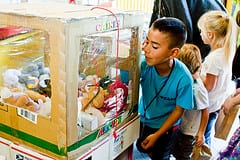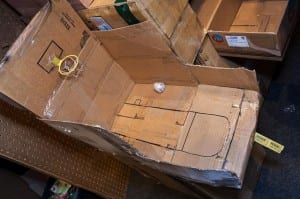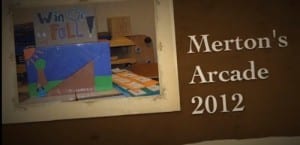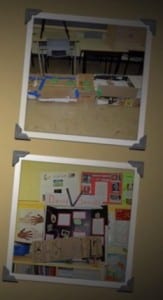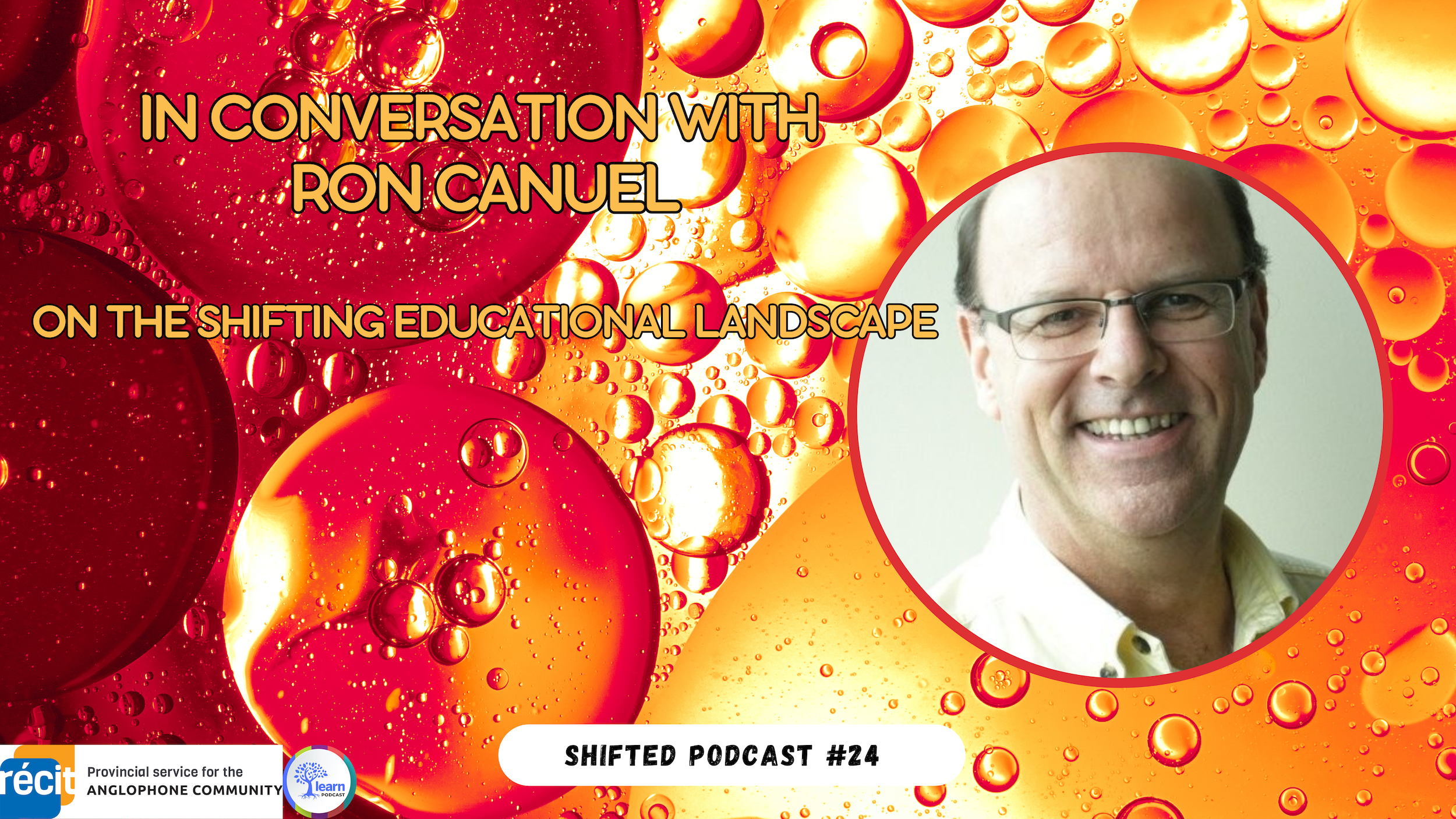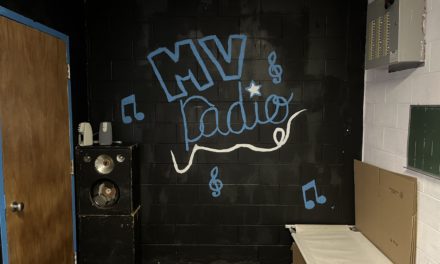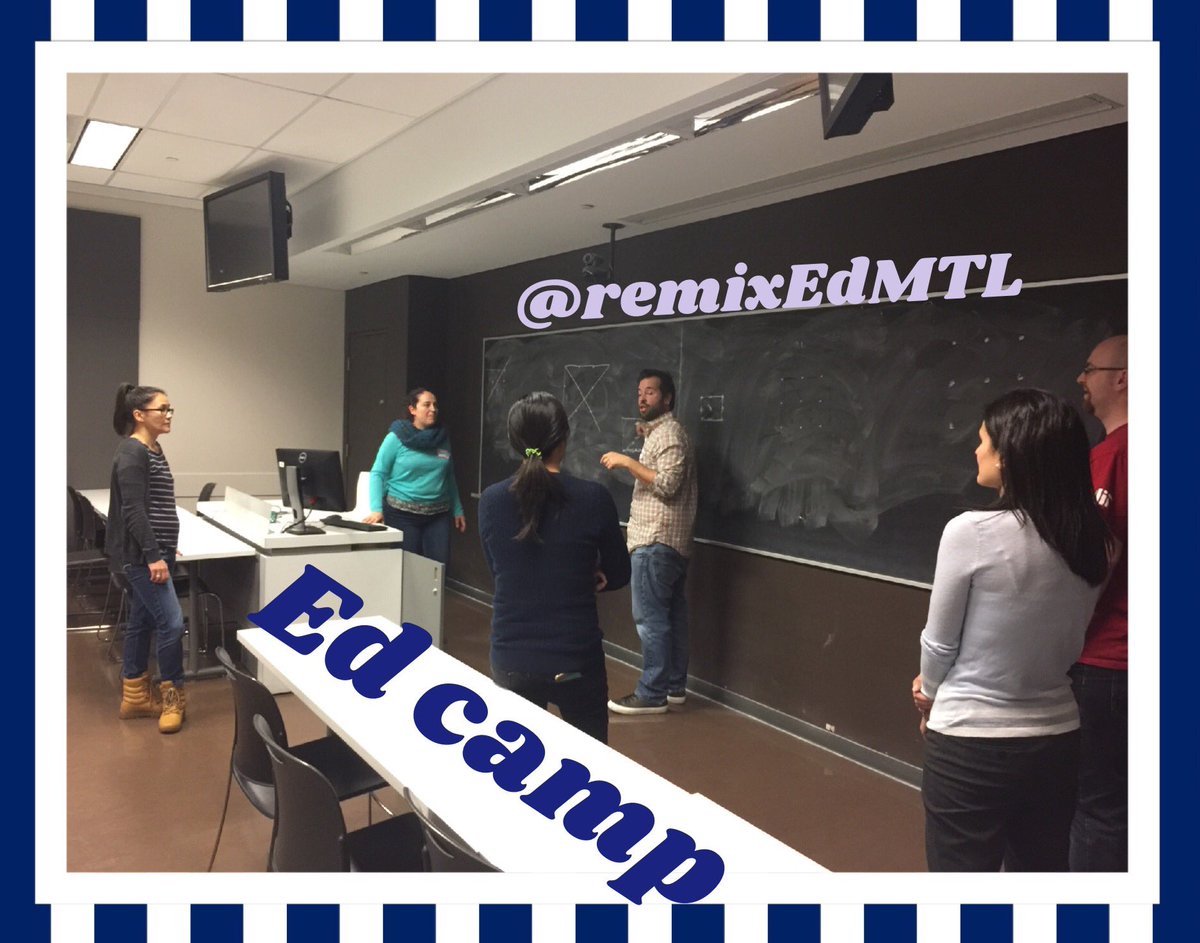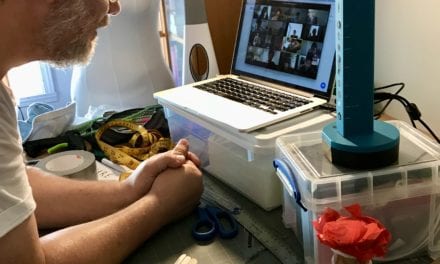Last year I wrote a blog post about Maker Spaces. Many involved in the maker movement encourage the use of digital technology, but that does not have to be the case.
A couple of years ago I saw a video about Caine, a nine-year old boy who spent his summer building arcade games out of boxes and bits and pieces he found in his father’s used auto parts shop. After a summer of no customers, his first customer, a film-maker Nirvon Mullick, organized a flash mob to bring customers to the arcade. The video Mullick created about the event went viral. Caine has gone on to inspire others to create, imagine and build.
Recently I saw a second video, a youth TEDTalk with Caine and Mullick. I shared it with my colleagues and was delighted to hear that Lisa Triestino, currently an ICT consultant at EMSB, had also been inspired by Caine. I had the opportunity to chat with her to learn more about the project which took place at Merton School last school year when she was the science and technology teacher there.
It began when a parent of a grade one student in the school told Lisa about Caine. The grade one student had worked on building arcade games with a friend and the parent thought this would be great for the science program at the school. Lisa shared Caine’s video with her students and that inspired a project for the school – the construction of arcade games concluding with an arcade game day. All students contributed in some way from collecting recycled objects to building the games and making prizes. All components of the games the students built had to be recycled materials to tie in to the environmental aspect of the science program and to increase environmental awareness. The school was already involved with recycling and composting so this was a good tie-in to what they were already living.
The students designed and built arcade games and everyone had the opportunity to test them out when the entire arcade was set up in the gym. But that is the end of the project. Let’s see how it proceeded.
The builders had to research arcade and carnival games. The game they built had to include at least one simple machine. The process went from research online to design. Each student needed to sketch the machine, connect it to science and explain how the machines would work. Then the building began. Students were so engaged they did not realize they were learning. They just thought it was fun. Lisa wanted them to learn through play, to help them see that learning science concepts can be fun. I asked Lisa about her other goals for the project:
“I wanted the cooperation to happen amongst each other. I wanted them to think outside the box. I wanted them to use prior knowledge based on everything we had learned in science and robotics beforehand and try to incorporate that into their learning.”
Lisa described to me how the students used their math and science skills in the building process as well as their willingness to go back, correct, find a better way. Different games provided different challenges, but the students were focused on getting their games working so the science just became a way to make that happen. From getting squirrels to pop up using a pulley system (thinking about gravity, the tension of the rope and the angle at which the pulley should be pulled), figuring out how to get a “Wheel of Fortune” wheel to spin, to getting hockey pucks of the right diameter, the students used their knowledge and learned by doing. Trial and error led to redesign.
“It was a lot of redesigning… they thought certain things would work and then as they tried to put that together they realized that certain measurements were off or certain ideas wouldn’t work or certain materials wouldn’t work whether that was because of weight or size….”
The students kept journals which would include the redesigns and new sketches as the adjustments were made. Some students went through multiple revisions. The impetus to get their games working kept them motivated. Lisa told me there was not a single team that got frustrated, “They took it and they went with it!”
Work like this needs to be celebrated and the school had an arcade day at which the games were set up for all to play. A small entrance fee was collected; all proceeds went to the Montreal Children’s Hospital. Game winners collected “Merton Dollars” which could be exchanged at the end for a prize. Prizes were made in art classes.
Science, technology, math, art, English or French (rules for the game), were all integrated seamlessly into this project. And lots of fun!
The only caveats Lisa had – arcade games take up space. There was some frustration about where to keep them all as the building was in process. However, when everyone saw what the students had accomplished they were all impressed and felt it was well worth it.
Making and creating does not have to be expensive. We need to engage students, to set their imaginations free to explore, create, play with ideas and learn through doing.
Learn more about Caine’s Arcade and get inspired.
Mullick wanted to help set up a college fund for Caine and asked for donations hoping to collect $25000. To date more than $200,000 as been donated. As a result he has set up a foundation to help other children like Caine. The Imagination Foundation also hosts a Cardboard Challenge. From their site:
“This September, kids of all ages are invited to build anything they can dream up using cardboard, recycled materials and imagination. Then on Saturday, October 11th, 2014, communities will come together to play!”
Photographs
Leslie Kalohi under a CC license
Gayle Laird under a CC license
The Exploratorium in San Francisco set up Caine’s Arcade at the museum. For anyone interested, some of the Exploratorium people are offering a course on Tinkering Fundamentals: A Constructionist Approach to STEM Learning I was fortunate enough to meet and spend time with two of the course instructors, Mike Petrich and Karen Wilkinson, in 1998. They are inspirational people, passionate about science and fun.

